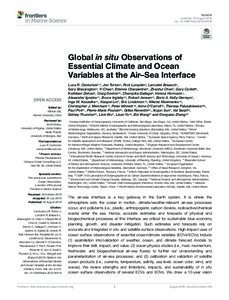| dc.contributor.author | Centurioni, L.R. | |
| dc.contributor.author | Turton, J. | |
| dc.contributor.author | Lumpkin, R. | |
| dc.contributor.author | Braasch, L. | |
| dc.contributor.author | Brassington, G. | |
| dc.contributor.author | Chao, Y. | |
| dc.contributor.author | Charpentier, E. | |
| dc.contributor.author | Chen, Z. | |
| dc.contributor.author | Corlett, G. | |
| dc.contributor.author | Dohan, K. | |
| dc.contributor.author | Donlon, C. | |
| dc.contributor.author | Gallage, C. | |
| dc.contributor.author | Hormann, V. | |
| dc.contributor.author | Ignatov, A. | |
| dc.contributor.author | Ingleby, B. | |
| dc.contributor.author | Jensen, R. | |
| dc.contributor.author | Kelly-Gerreyn, B.A. | |
| dc.contributor.author | Koszalka, I.M. | |
| dc.contributor.author | Lin, X. | |
| dc.contributor.author | Lindstrom, E. | |
| dc.contributor.author | Maximenko, N. | |
| dc.contributor.author | Merchant, C.J. | |
| dc.contributor.author | Minnett, P. | |
| dc.contributor.author | O’Carroll, A. | |
| dc.contributor.author | Paluszkiewicz, T. | |
| dc.contributor.author | Poli, P. | |
| dc.contributor.author | Poulain, P-M. | |
| dc.contributor.author | Reverdin, G. | |
| dc.contributor.author | Sun, X. | |
| dc.contributor.author | Swail, V. | |
| dc.contributor.author | Thurston, S. | |
| dc.contributor.author | Wu, L. | |
| dc.contributor.author | Yu, L. | |
| dc.contributor.author | Wang, B . | |
| dc.contributor.author | Zhang, D. | |
| dc.date.accessioned | 2020-02-14T15:34:41Z | |
| dc.date.available | 2020-02-14T15:34:41Z | |
| dc.date.issued | 2019 | |
| dc.identifier.citation | Centurioni, L.R.; Turton, J.; Lumpkin, R, Braasch, L,; Brassington, G, Chao, Y, Charpentier, E.; Chen, Z.; Corlett, G.; Dohan, K.; Donlon, C.; Gallage, C.; Hormann, V.;
Ignatov, A.; Ingleby, B.; Jensen, R.;
Kelly-Gerreyn, B.A; Koszalka, I.M.; Lin, X.;
Lindstrom, E.; Maximenko, N,;
Merchant, C.J.; Minnett, P.; O’Carroll, A.;
Paluszkiewicz, T.; Poli, P.; Poulain, P-M.;
Reverdin, G.; Sun, X.; Swail, V.;
Thurston, S.; Wu, L.; Yu, L.; Wang, B. and
Zhang, D. (2019) Global in situ Observations of Essential Climate
and Ocean Variables at the Air–Sea Interface. Frontiers in Marine Science,. 6:419. 23pp. DOI: 10.3389/fmars.2019.00419 | en_US |
| dc.identifier.uri | http://hdl.handle.net/11329/1217 | |
| dc.identifier.uri | http://dx.doi.org/10.25607/OBP-734 | |
| dc.description.abstract | The air–sea interface is a key gateway in the Earth system. It is where the
atmosphere sets the ocean in motion, climate/weather-relevant air–sea processes
occur, and pollutants (i.e., plastic, anthropogenic carbon dioxide, radioactive/chemical
waste) enter the sea. Hence, accurate estimates and forecasts of physical and
biogeochemical processes at this interface are critical for sustainable blue economy
planning, growth, and disaster mitigation. Such estimates and forecasts rely on
accurate and integrated in situ and satellite surface observations. High-impact uses of
ocean surface observations of essential ocean/climate variables (EOVs/ECVs) include
(1) assimilation into/validation of weather, ocean, and climate forecast models to
improve their skill, impact, and value; (2) ocean physics studies (i.e., heat, momentum,
freshwater, and biogeochemical air–sea fluxes) to further our understanding and
parameterization of air–sea processes; and (3) calibration and validation of satellite
ocean products (i.e., currents, temperature, salinity, sea level, ocean color, wind, and
waves). We review strengths and limitations, impacts, and sustainability of in situ
ocean surface observations of several ECVs and EOVs. We draw a 10-year vision
of the global ocean surface observing network for improved synergy and integration
with other observing systems (e.g., satellites), for modeling/forecast efforts, and for
a better ocean observing governance. The context is both the applications listed
above and the guidelines of frameworks such as the Global Ocean Observing System
(GOOS) and Global Climate Observing System (GCOS) (both co-sponsored by the
Intergovernmental Oceanographic Commission of UNESCO, IOC–UNESCO; the World
Meteorological Organization, WMO; the United Nations Environment Programme,
UNEP; and the International Science Council, ISC). Networks of multiparametric
platforms, such as the global drifter array, offer opportunities for new and improved
in situ observations. Advances in sensor technology (e.g., low-cost wave sensors),
high-throughput communications, evolving cyberinfrastructures, and data information
systems with potential to improve the scope, efficiency, integration, and sustainability of
the ocean surface observing system are explored. | en_US |
| dc.language.iso | en | en_US |
| dc.rights | Attribution 4.0 International | * |
| dc.rights.uri | http://creativecommons.org/licenses/by/4.0/ | * |
| dc.subject.other | Global in situ observations | en_US |
| dc.subject.other | Air-sea interface | en_US |
| dc.subject.other | Essential Ocean Variables (EOV) | en_US |
| dc.subject.other | Essential Climate Variables (ECV) | en_US |
| dc.subject.other | Climate variability | en_US |
| dc.subject.other | Climatic changes | en_US |
| dc.subject.other | Weather forecasting | en_US |
| dc.subject.other | SVP drifters | en_US |
| dc.title | Global in situ Observations of Essential Climate and Ocean Variables at the Air–Sea Interface. | en_US |
| dc.type | Journal Contribution | en_US |
| dc.description.refereed | Refereed | en_US |
| dc.format.pagerange | 23pp. | en_US |
| dc.identifier.doi | 10.3389/fmars.2019.00419 | |
| dc.subject.parameterDiscipline | Parameter Discipline::Physical oceanography | en_US |
| dc.bibliographicCitation.title | Frontiers in Marine Science | en_US |
| dc.bibliographicCitation.volume | 6 | en_US |
| dc.bibliographicCitation.issue | Article 419 | en_US |
| dc.description.sdg | 14 | en_US |
| dc.description.bptype | Manual (incl. handbook, guide, cookbook etc) | en_US |
| dc.description.frontiers | 2018-10-30 | |
| obps.contact.contactname | Luca Centuronia | |
| obps.contact.contactemail | lcenturioni@ucsd.edu | |
| obps.resourceurl.publisher | https://www.frontiersin.org/articles/10.3389/fmars.2019.00419/full | en_US |
 Repository of community practices in Ocean Research, Applications and Data/Information Management
Repository of community practices in Ocean Research, Applications and Data/Information Management

